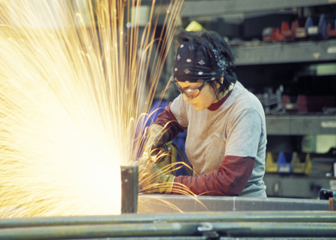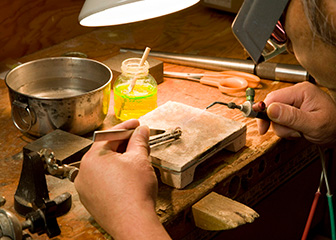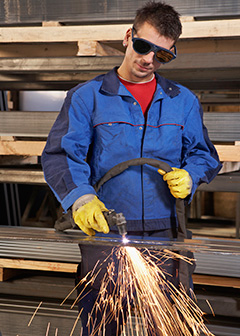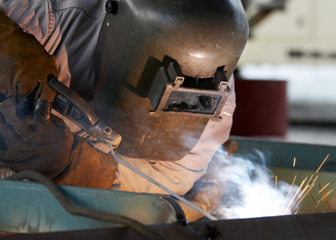Summary

| Quick Facts: Welders, Cutters, Solderers, and Brazers | |
|---|---|
|
$35,450 per year
$17.04 per hour |
|
| High school diploma or equivalent | |
| Less than 1 year | |
| Moderate-term on-the-job training | |
| 337,300 | |
| 15% (About as fast as average) | |
| 50,700 | |
What Welders, Cutters, Solderers, and Brazers Do
Welders, cutters, solderers, and brazers weld or join metal parts. They also fill holes, indentions, or seams of metal products, using hand-held welding equipment.
Work Environment
Welders, cutters, solderers, and brazers may work outdoors, often in inclement weather, or indoors, sometimes in a confined area. They may work on a scaffold high off the ground, and they occasionally must lift heavy objects and work in awkward positions. Most work full time and overtime is common in this occupation.
How to Become a Welder, Cutter, Solderer, or Brazer
Training for welders, cutters, solderers, and brazing workers varies. Training ranges from a few weeks of school or on-the-job training for low-skilled positions to several years of combined school and on-the-job training for highly skilled jobs.
Pay
The median annual wage of welders, cutters, solderers, and brazers was $35,450 in May 2010.
Job Outlook
Employment of welders, cutters, solderers, and brazers is expected to grow 15 percent from 2010 to 2020, about as fast as the average for all occupations. Properly skilled welders with up-to-date training should have the best job prospects.
Similar Occupations
Compare the job duties, education, job growth, and pay of welders, cutters, solderers, and brazers with similar occupations.
O*NET
O*NET provides comprehensive information on key characteristics of workers and occupations.
Contacts for More Information
Learn more about welders, cutters, solderers, and brazers by contacting these additional resources.










